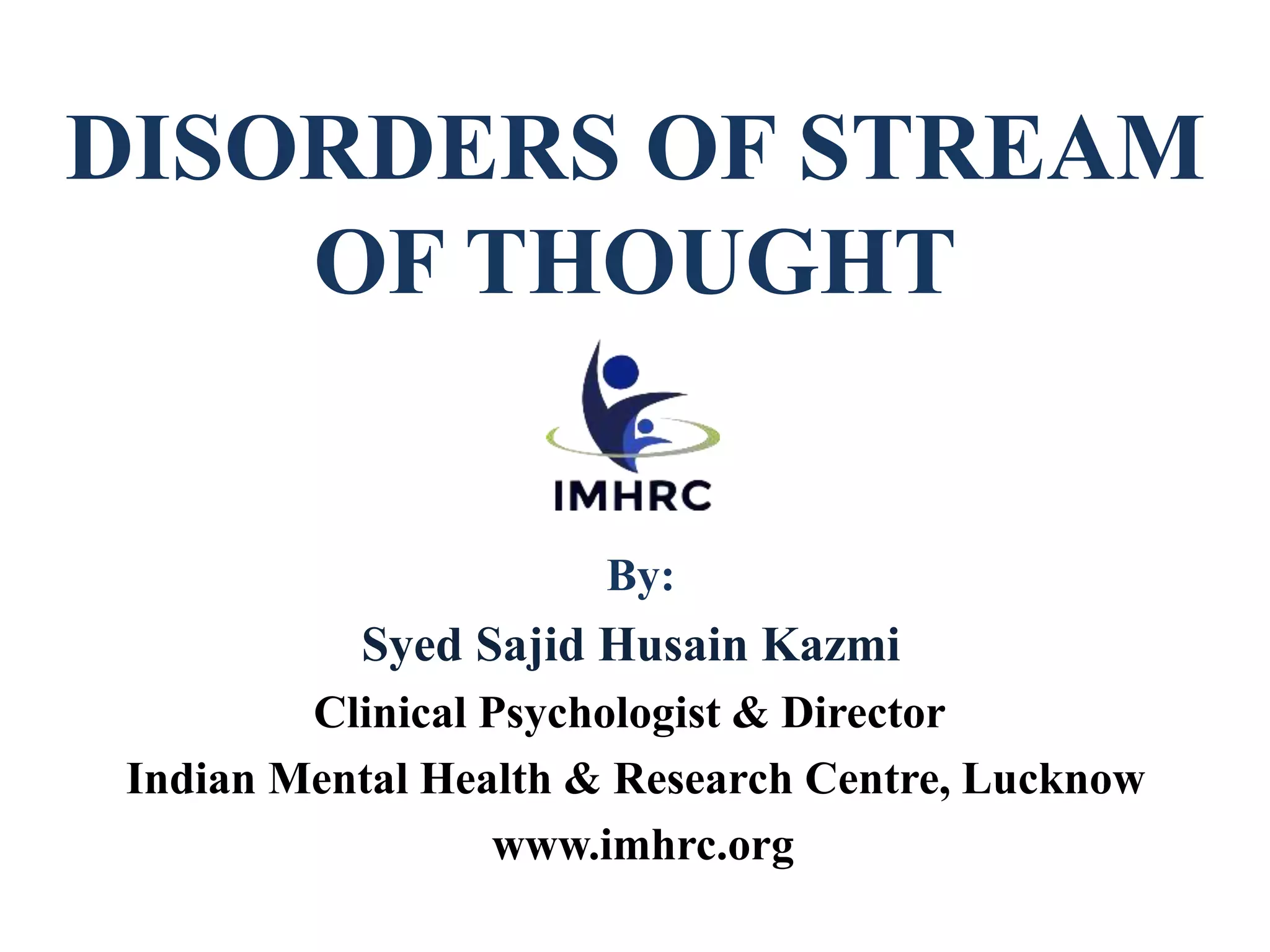The document discusses disorders of stream of thought, including disorders of tempo such as flight of ideas, retardation of thinking, and circumstantiality, as well as disorders of continuity such as perseveration and thought blocking. It provides definitions and examples of each disorder. Assessment methods are also summarized, including observation, clinical interviews, mental status examinations, scales like PANSS and BPRS, and other tools like the Rorschach ink blot test and Thought and Language Index.
























![Example of flight of ideas:
1) From a manic patient who was asked where she lived and
she replied: ‘Birmingham, King standing; see the king he’s
standing, king, king, sing, sing, bird on the wing, wing,
wing on the bird, bird, turd, turd.
2) The respondent was asked about his future job prospects-
esjs Hkfo"; esa lcls igyh bPNk gS fd eSa dEI;wVj bathfu;j cuuk pkgrk gw¡ tc eSa
dEI;wVj bathfu;j cu tkmaxk rks tks esjh ru[kk feysxh mlls eSa lhvkbMh dh
i<+kbZ d#axk tc eSa lhvkMh cu tkmaxk rc eSa cM+s fØfeuyl dks idM+qaxk
vkSj vius ns'k dks Lo{k cukmaxk eSa vius ns'k is tku Hkh ns ldrk gw¡ vxj eSa
tku ns nwaxk rks 'khgn dgykmaxk vkSj tc eSa vehj cu tkmaxk rks lcls igys
bPNk gS fd vius xkao esa tks efLtn VwV xbZ gS mls cukokmaxk vkSj vius [ksr
ds fy, Hkh dqN d#axk] eq>s ,d gh ckr ;kn jgrk gS fd Honesty is the best
policy bekunkjh ,d lPph furh gS eSa vius Hkfo"; esa vPNk O;fDr cuuk pkgrk
gw¡¡ tgka rd esjh rkdr gksxh ogka rd d#axk vkSj ftanxh Hkj vius ek¡ cki dh lsok
d#axk] vius HkkbZ cgu ds lkFk eksgCcr ls jgw¡xk vkSj lHkh ls eksgCcriwoZd
thuk pkgrk gw¡A](https://image.slidesharecdn.com/disorderstreamofthought-190708120523/75/Disorders-Stream-of-Thought-25-2048.jpg)





























